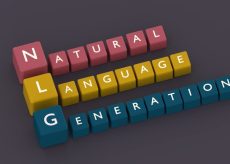Mock Exam Databricks Machine learning For Beginner 2023


Price: 19.99$
Promo code for this course from June 17, 2023 to June 22, 2023 only $9.99: 8FA919993B18C0D0C94EWelcome to the Mock Exam for Databricks Machine Learning, specially designed for beginners in the field. If you’re looking for a comprehensive set of realistic and high-quality practice questions to prepare for the Databricks Certified Machine Learning test, you’ve come to the right place. These mock exams are tailored to provide you with the knowledge and confidence necessary to excel in the actual test. With 90 brand new questions aligned with the exam’s format and content, you’ll develop a solid understanding of Spark ML and machine learning concepts. Each question is accompanied by a detailed answer explanation, enabling you to learn from your mistakes. Additionally, we provide links to expert web resources and Spark ML documentation, allowing you to deepen your understanding of Spark’s functionality. Sample Question: To give you an idea of the quality of our questions, here’s an example from the Data Frame API section of the practice exams: Question: The implementation of linear regression in Spark ML first attempts as to solve the linear regression problem using refer decomposition, but this method does not scale well to large numbers of variables. Which of the following approaches does Spark ML use to distribute the training of a linear regression model large data: A. Singular value decomposition B. Logistic regression C. Spark ML cannot distribute linear regression training D. Least-squares method E. Iterative optimization Correct Answer: E. Iterative optimization Explanation: The statement in the question is partially correct – Spark ML does use the Cholesky decomposition method to solve the linear regression problem when using the ordinary least squares (OLS) solver, but this method does not scale well to large datasets with a large number of variables. To overcome this limitation, Spark ML uses an iterative optimization method known as L-BFGS (Limited-memory Broyden-Fletcher-Goldfarb-Shanno) to solve the linear regression problem. The L-BFGS algorithm can be distributed across multiple nodes in a Spark cluster, allowing it to handle large datasets and large numbers of variables. Therefore, the correct answer to the question is E. Iterative optimization. Singular value decomposition is another method that can be used to solve linear regression problems, but it is not typically used in Spark ML’s implementation of linear regression. Logistic regression is a different type of algorithm that is used for binary classification problems, and Spark ML does not use it to distribute linear regression training. The least-squares method is the method used by the OLS solver in Spark ML, but it is not as scalable as the L-BFGS solver for large datasets. COURSE CONTENTThe practice exams cover the following topics: Databricks Machine Learning ML Workflows Spark MLScaling ML Models The exam questions are related to: Understanding Databricks Machine Learning and its capabilities within machine learning workflows, including: Databricks Machine Learning (clusters, Repos, Jobs)Databricks Runtime for Machine Learning (basics, libraries)Auto ML (classification, regression, forecasting)Feature Store (basics)MLflow (Tracking, Models, Model Registry)Implementing correct decisions in machine learning workflows, including: Exploratory data analysis (summary statistics, outlier removal)Feature engineering (missing value imputation, one-hot-encoding)Tuning (hyperparameter basics, hyperparameter parallelization)Evaluation and selection (cross-validation, evaluation metrics)Implementing machine learning solutions at scale using Spark ML and other tools, including: Distributed ML Concepts Spark ML Modeling APIs (data splitting, training, evaluation, estimators vs. transformers, pipelines)Hyperopt Pandas API on Spark Pandas UDFs and Pandas Function APIs Understanding advanced scaling characteristics of classical machine learning models, including: Distributed Linear Regression Distributed Decision Trees Ensembling Methods (bagging, boosting)LET’S GET YOU CERTIFIED! Are you ready to ace your Databricks Certified Machine Learning Associate exam? By clicking Buy now, you’ll gain immediate access to the following benefits: Two practice exams with a total of 90 high-quality questions, closely resembling the actual exam Unlimited attempts on the practice exams Instructor support to address any questions you may have Detailed explanations for each question, along with additional resources Access to the exams anytime, anywhere, on your desktop, tablet, or mobile device via the Udemy app30-day money-back guarantee if you’re unsatisfied with the course I’m excited to have you as a student and look forward to witnessing your success as you pass the exam, taking your career to new heights as a Databricks Certified Machine Learning Associate! Who this course is for: Individuals preparing for the Databricks Certified Machine Learning Associate exam in Python IT and data professionals seeking to enhance their Spark knowledge for job interviews Learners aiming to advance their careers with an official Databricks certification







taking your car to france
Lankier men with longer limbs relative to their torso lift less weight than stockier men. Lank and stocky man have the same distance lever between tendon and joint where your muscle s force generates your torque, but lankier men have a longer limb where the external weight s force is generating its
japanese imports scotland
This is a very nice post. Thank you for writing this.